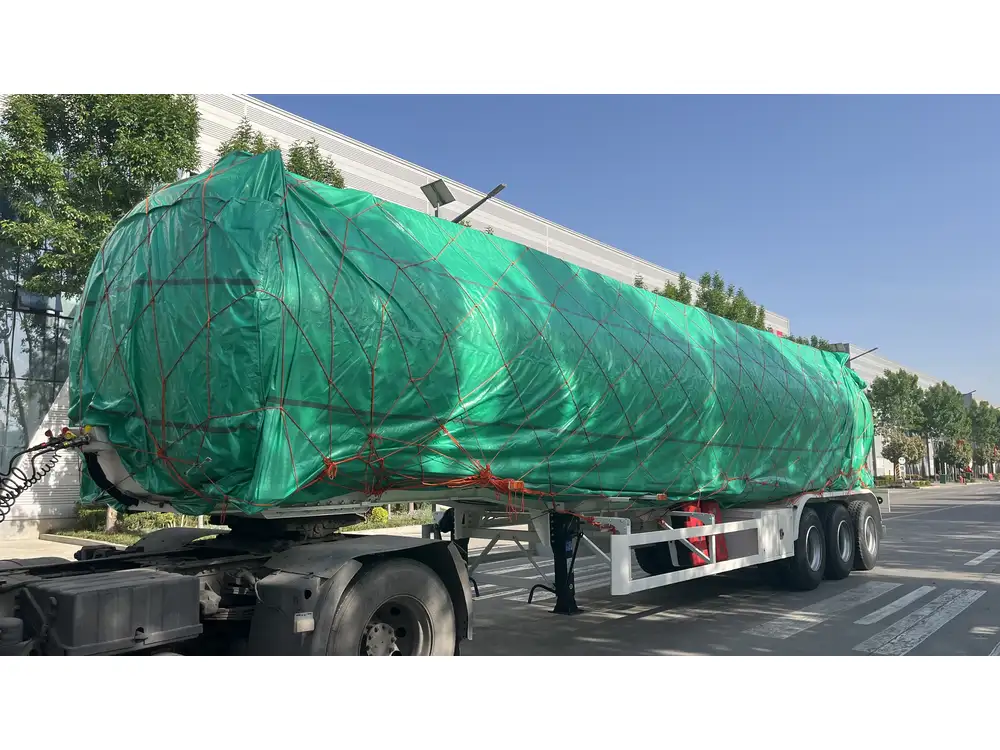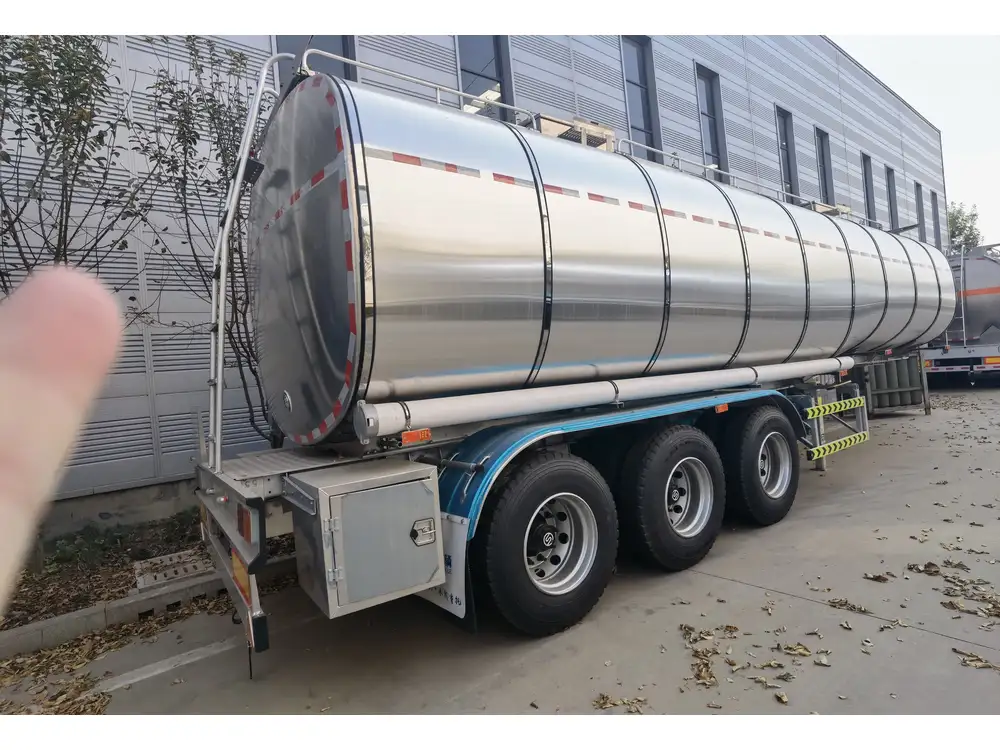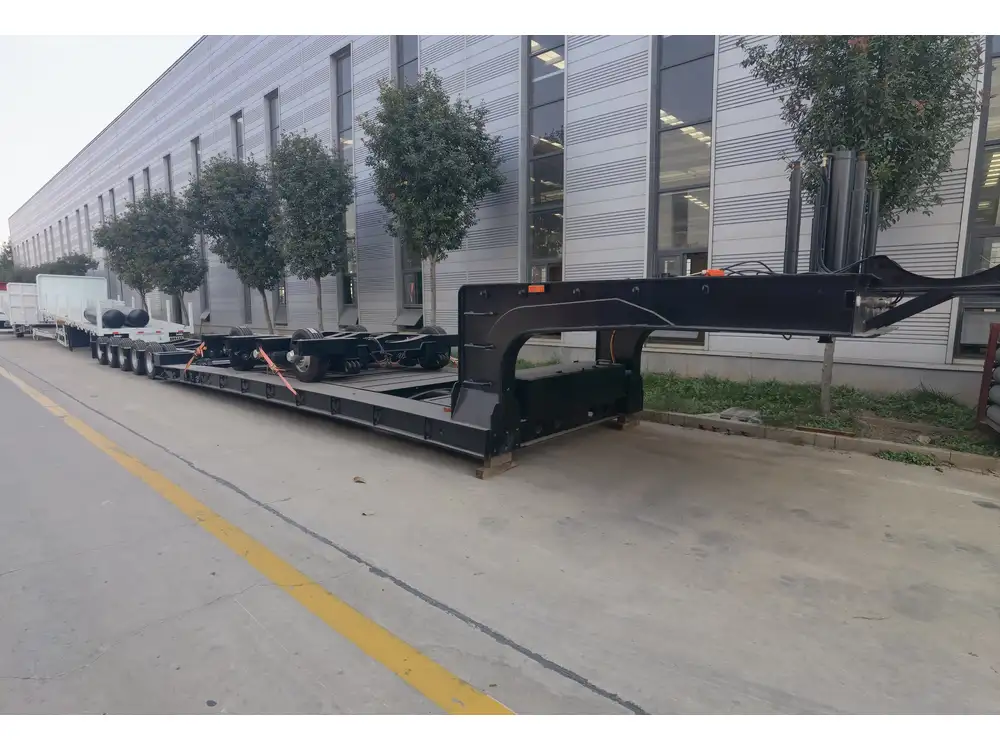When it comes to the sensitive operation and safety of fuel tanker trailers, understanding how to manually operate the air valves is crucial. Mastering the art of manual valve operation can enhance efficiency, safety, and reliability, especially in emergency situations or when automated systems fail.
Understanding Fuel Tanker Trailers and Their Components
Fuel tanker trailers are complex vessels designed for the storage and transportation of various fuels. Critical components that contribute to their functionality include:
| Component | Description |
|---|---|
| Tank | The main body that holds fuel. |
| Air Valves | Control the release of air to facilitate filling and emptying. |
| Pumps | Move fuel in and out of the tank. |
| Hoses | Transfer fuel to and from the tanker. |
| Safety Valves | Prevent overpressure and ensure safety. |
The Role of Air Valves
Air valves play an integral role in maintaining the integrity and functionality of fuel tanker trailers. They are primarily responsible for:
- Preventing Vacuum: When fuel is drawn out, air valves allow air in to prevent the tank from collapsing.
- Facilitating Filling Operations: During fuel fill-up, they manage air release to avoid pressure buildup.
- Controlling Flow: By opening or closing valves, operators can effectively manage the flow of air and fuel.

Types of Air Valves
Understanding the types of air valves is vital for proficient manual operation. Below are the predominant types found in fuel tanker trailers:
- Automatic Air Valves: Operate automatically, reducing manual intervention.
- Manual Air Valves: Require operator input for opening and closing.
- Pressure Relief Valves: Release excess pressure to maintain safe operating conditions.
Features and Specifications
| Air Valve Type | Operation | Advantages | Drawbacks |
|---|---|---|---|
| Automatic | Automated | Convenience | May fail and restrict operations. |
| Manual | Manual Control | Direct oversight | Requires operator presence. |
| Pressure Relief | Auto/Manual | Enhances safety | Can malfunction if not maintained. |
Step-by-Step Guide to Manually Open Air Valves
The following precise steps outline how to manually open air valves on fuel tanker trailers, ensuring safety and efficiency throughout the process.

Step 1: Assess the Situation Before Operation
Before engaging the manual air valves, conduct a thorough assessment:
- Ensure Safety Gear is Worn: Use appropriate personal protective equipment (PPE) such as gloves, goggles, and safety boots.
- Check Surroundings: Ensure the area is clear of hazards and that you are not in a confined space.
Step 2: Identify the Manual Air Valve Location
Locate the manual air valve, which is typically positioned near the top or side of the fuel tanker trailer. Familiarize yourself with the following components:
- Handle or Lever: The mechanism used for opening/closing the valve.
- Markings: Look for clear labels indicating the open and closed positions.
Step 3: Prepare for Manual Operation
Before attempting to open the valve, ensure the following:
- Pressure Levels are Safe: Use a pressure gauge to confirm that the tank pressure is within safe limits.
- No Fuel Flow is Present: Ensure pumps are turned off to avoid back pressure during valve actuation.

Step 4: Engage the Manual Air Valve
To open the manual air valve:
- Position Yourself Safely: Stand to the side of the valve, maintaining a safe distance from potential venting.
- Grip the Handle: Firmly grasp the handle or lever.
- Turn or Pull the Handle: Depending on the design, either rotate or pull the handle to the designated “open” position.
Step 5: Monitor the Operation
Once the manual air valve is opened, observe the following:
- Listen for Air Flow: A hissing sound indicates air is moving into the tank, equalizing pressure.
- Check for Leaks: Inspect around the valve for any signs of fuel or air leaks.
Troubleshooting Common Issues

Problem: Valve Does Not Open Smoothly
Possible Causes:
- Dirt or debris lodged in the valve mechanism.
- Mechanical wear and tear.
Solutions:
- Inspect for obstructions and clean the valve.
- Lubricate moving parts with appropriate grease.

Problem: Air Flow Not Observed After Opening
Possible Causes:
- Valve failure.
- Blockage in the air intake.
Solutions:
- Check the functionality of the valve. If defective, replace it.
- Inspect air passages for any clogs or damage.

Safety Protocols When Operating Air Valves
Safety during the operation of manual air valves cannot be emphasized enough. Implement the following protocols:
- Always Work with a Partner: There is safety in numbers; ensure one person can assist in case of an emergency.
- Have an Emergency Plan: Know the procedures for fire or fuel spills, and keep emergency equipment readily available.
- Conduct Regular Maintenance: Regular checks and maintenance of the valves and other components can prevent failures.
Maintenance of Air Valves
Regular maintenance ensures that air valves function correctly and safely. Consider the following for effective maintenance:
Cleaning
- Routinely clean air valves to remove dirt, dust, and fuel remnants, as neglect can hinder performance.

Inspection
- Conduct visual inspections weekly to check for wear, corrosion, or signs of leaking and remedy any issues immediately.
Lubrication
- Apply high-quality lubricant to moving parts as per manufacturer recommendations to ensure smooth operation.
Conclusion: Efficiency and Safety in Fuel Tanker Operations
In summary, understanding how to manually open air valves on fuel tanker trailers is essential for safe and efficient operations. This guide has covered the vital aspects of valve types, operational steps, troubleshooting, safety protocols, and maintenance practices. By adhering to these guidelines, operators can enhance their effectiveness while minimizing risks associated with fuel transportation.

Call to Action
For further assistance or advanced training on fuel tanker trailer operations, do not hesitate to contact our experienced team. We provide comprehensive training and resources to ensure you are equipped for success in the field.
This detailed guide is designed to help fuel tanker operators confidently and safely navigate the intricacies of air valve operation. Fill your toolkit with knowledge, and remember: careful operation leads to responsible fuel handling.



